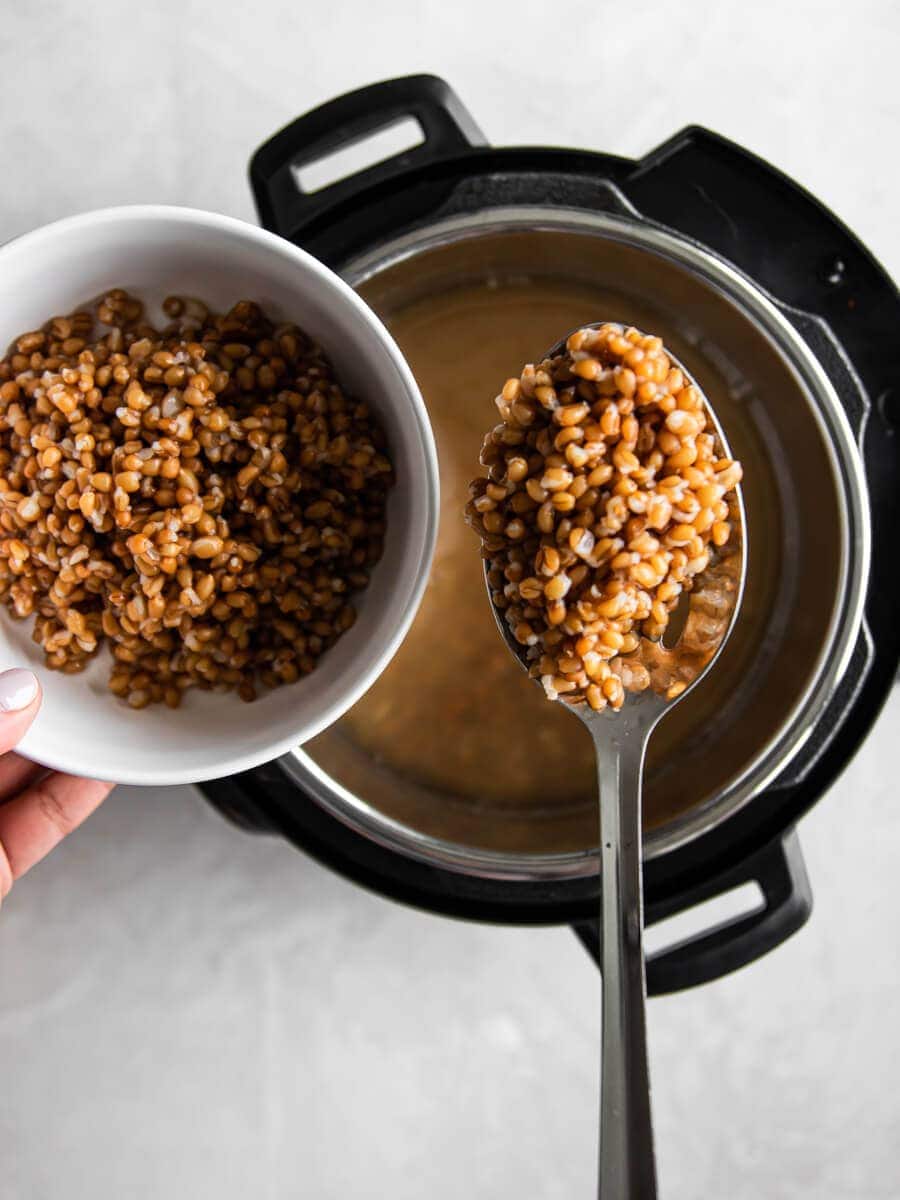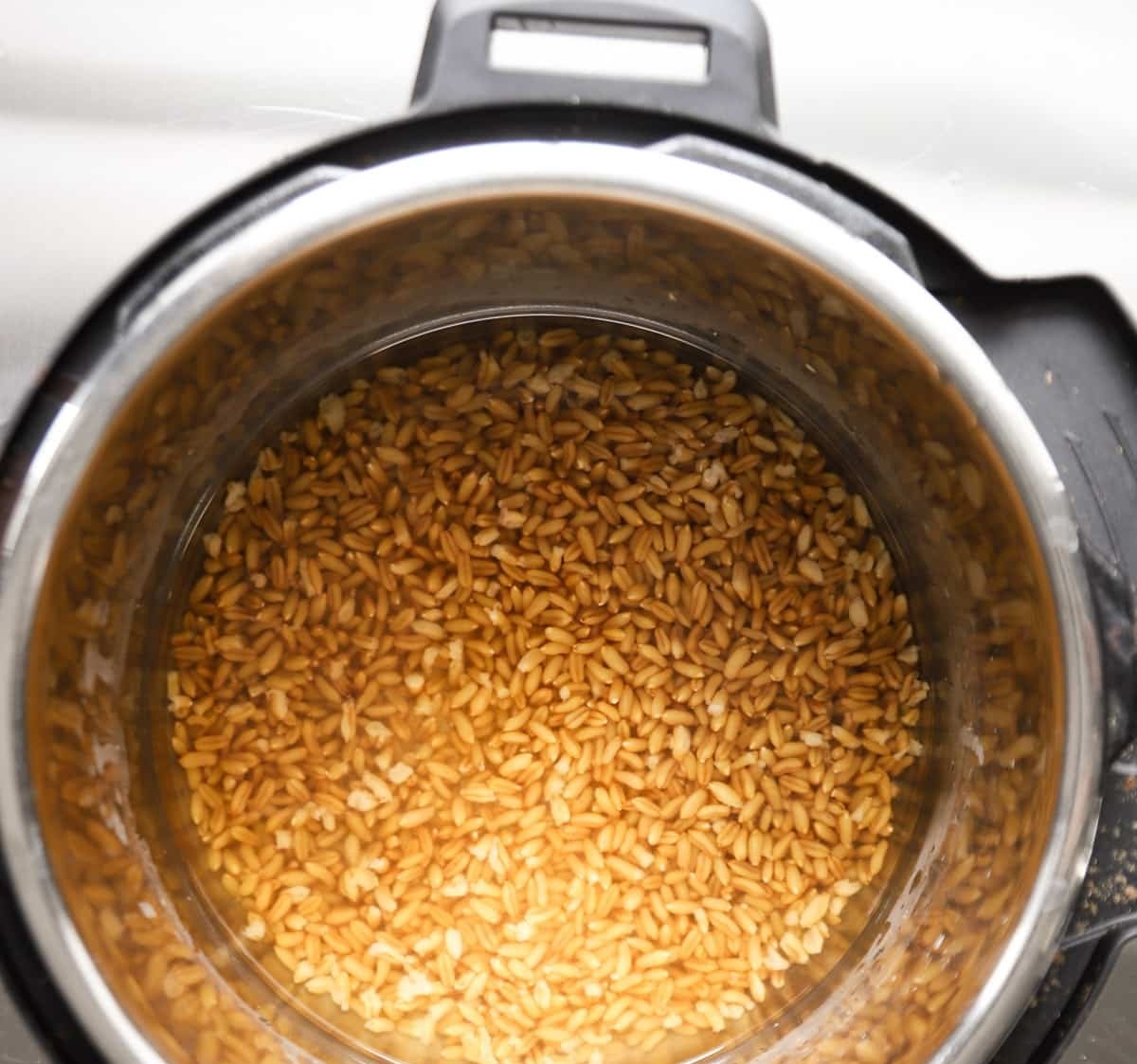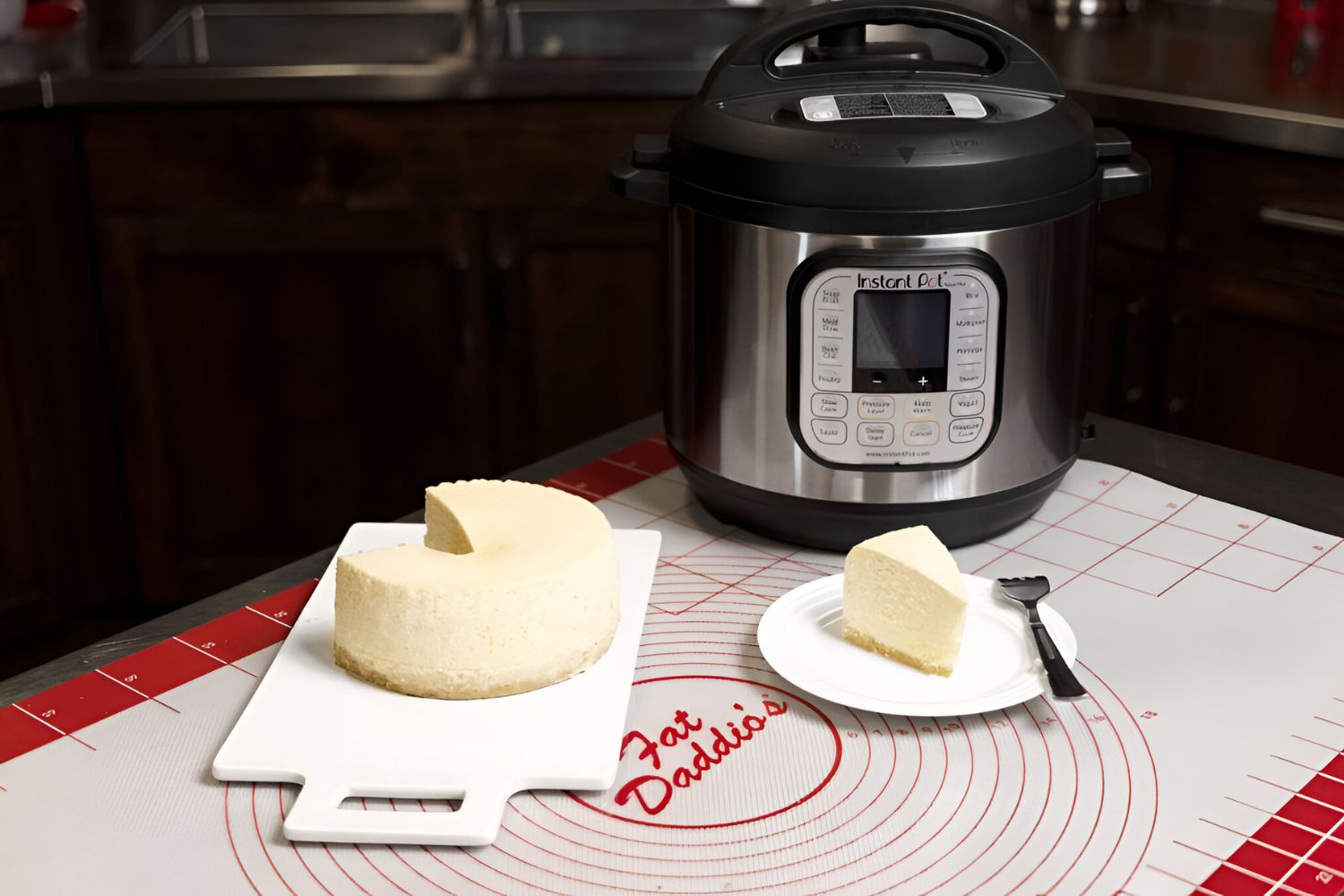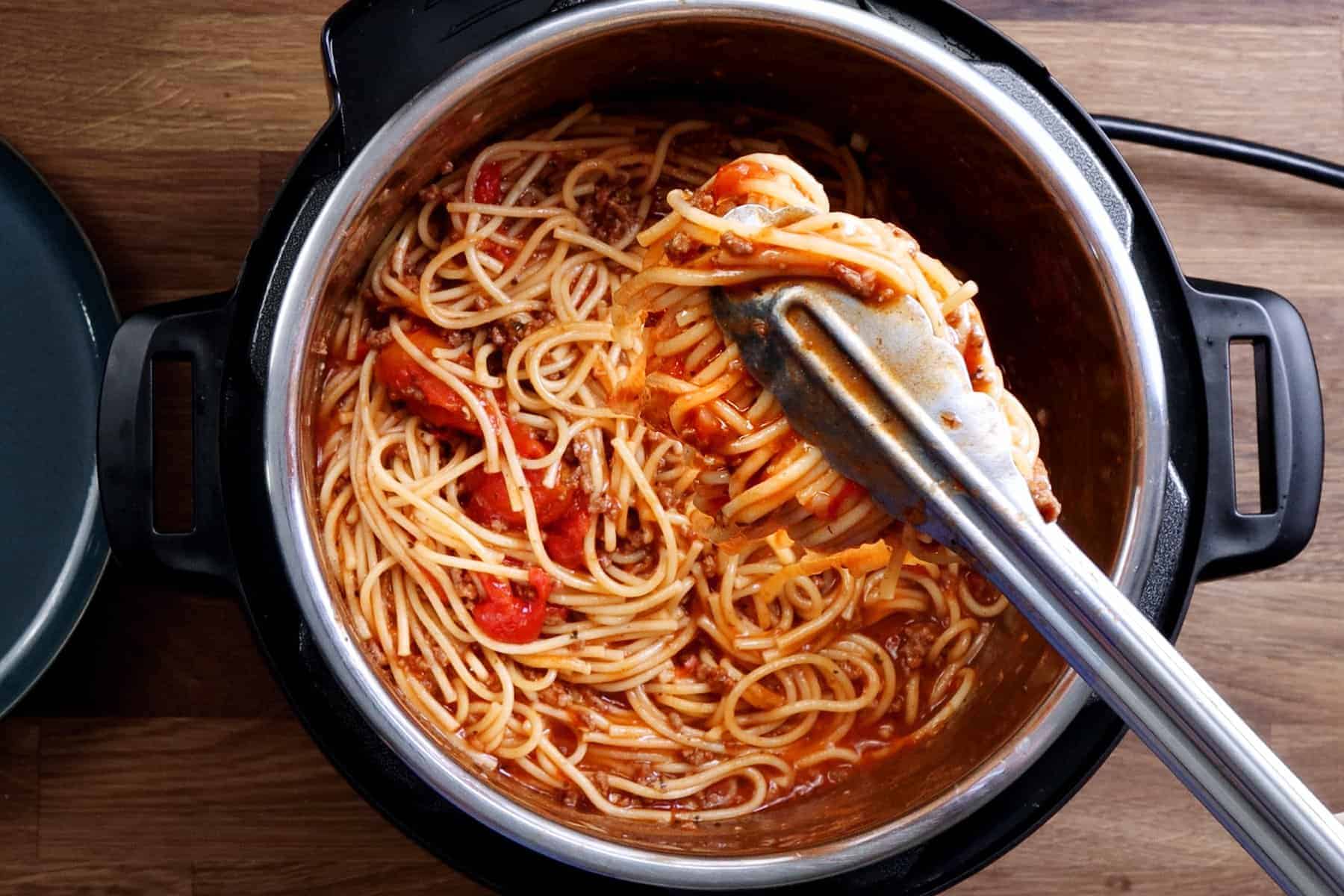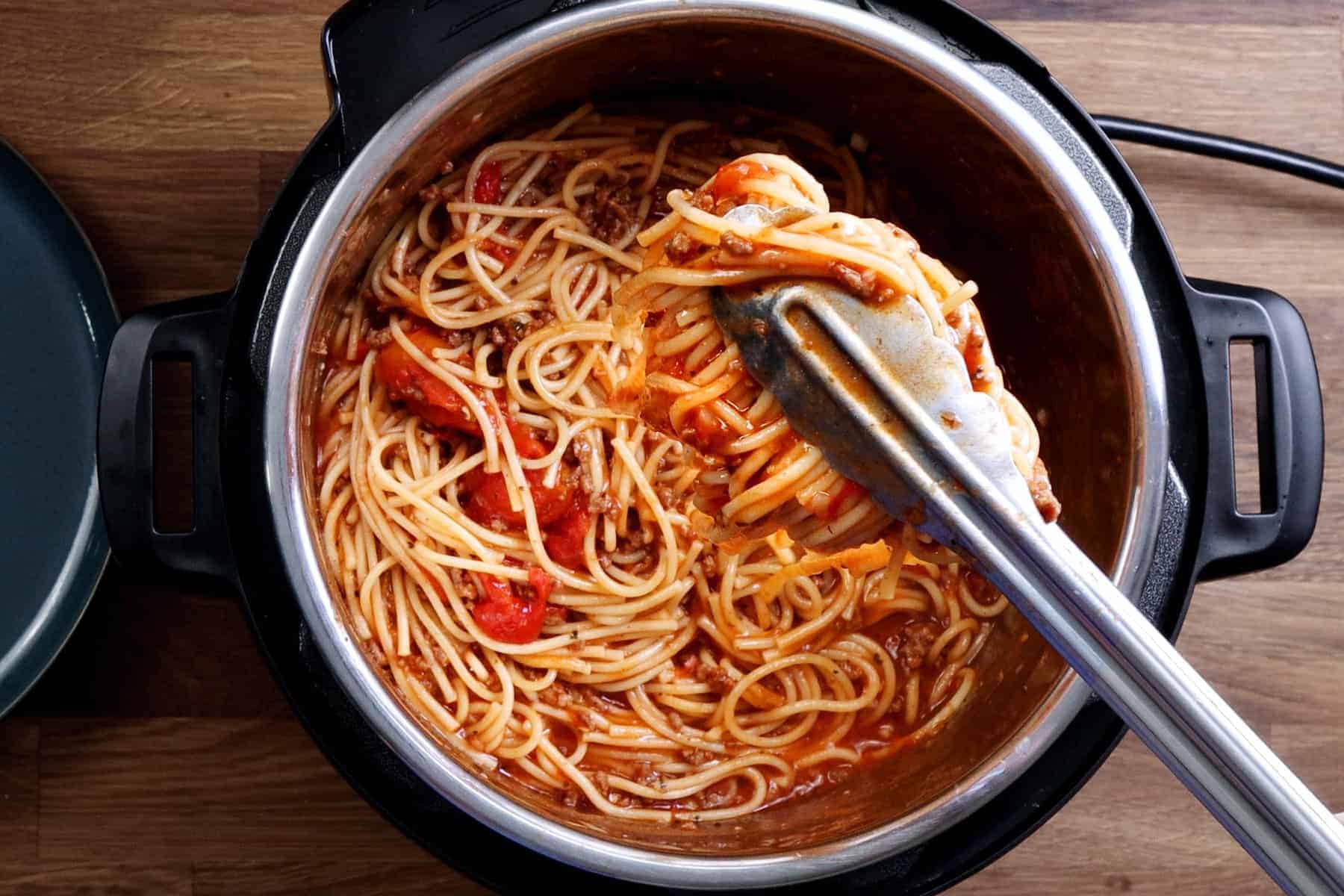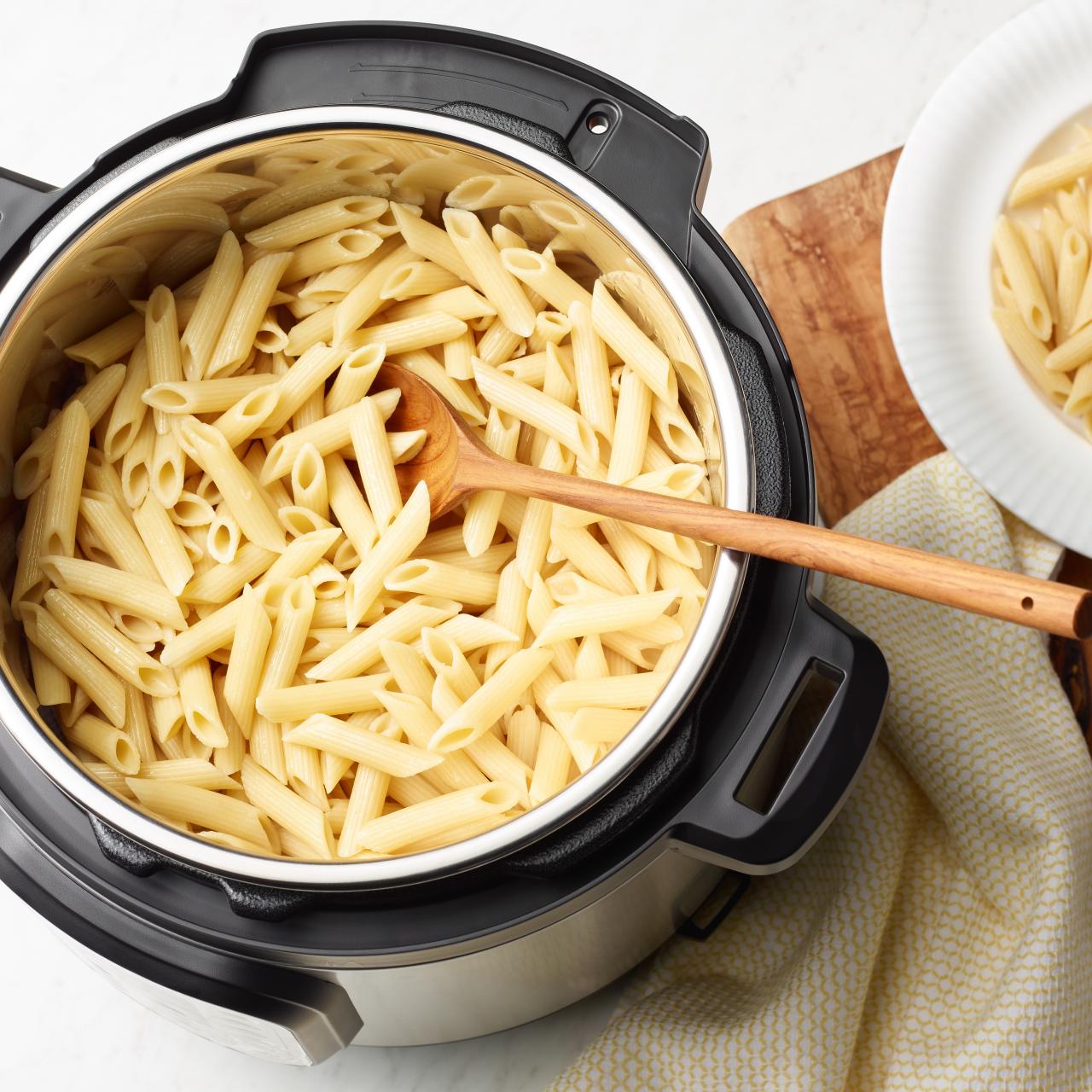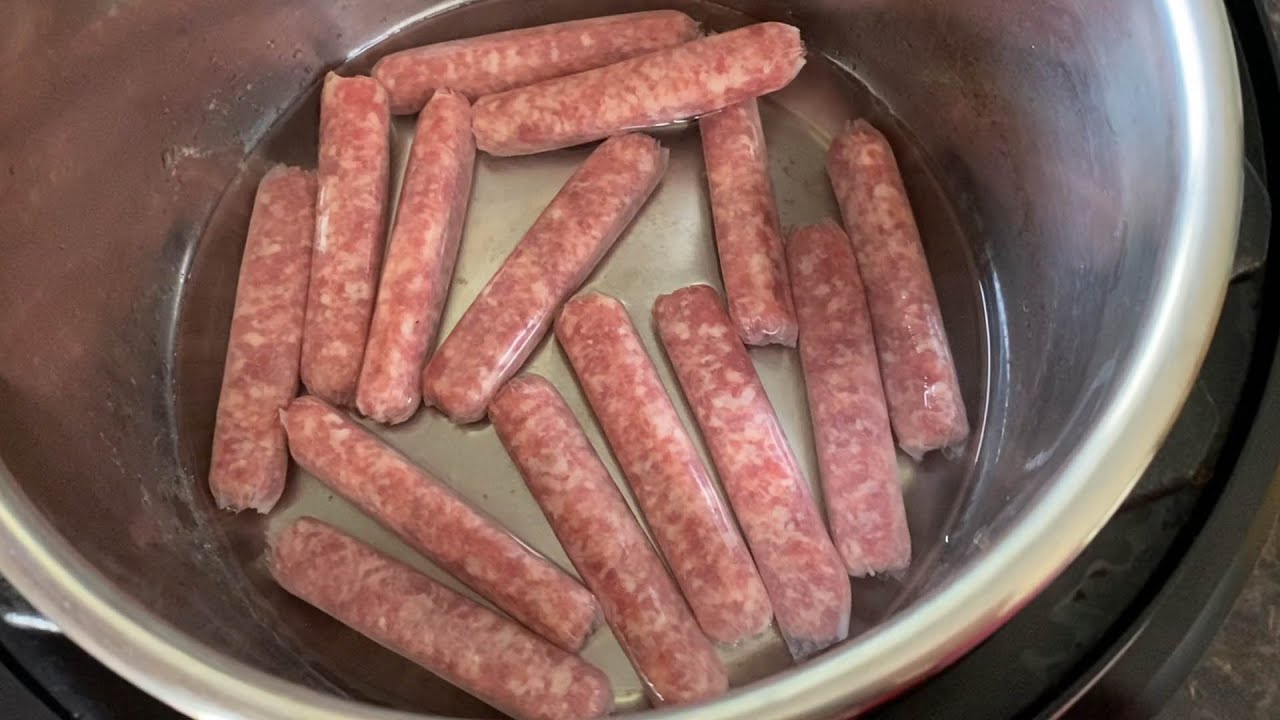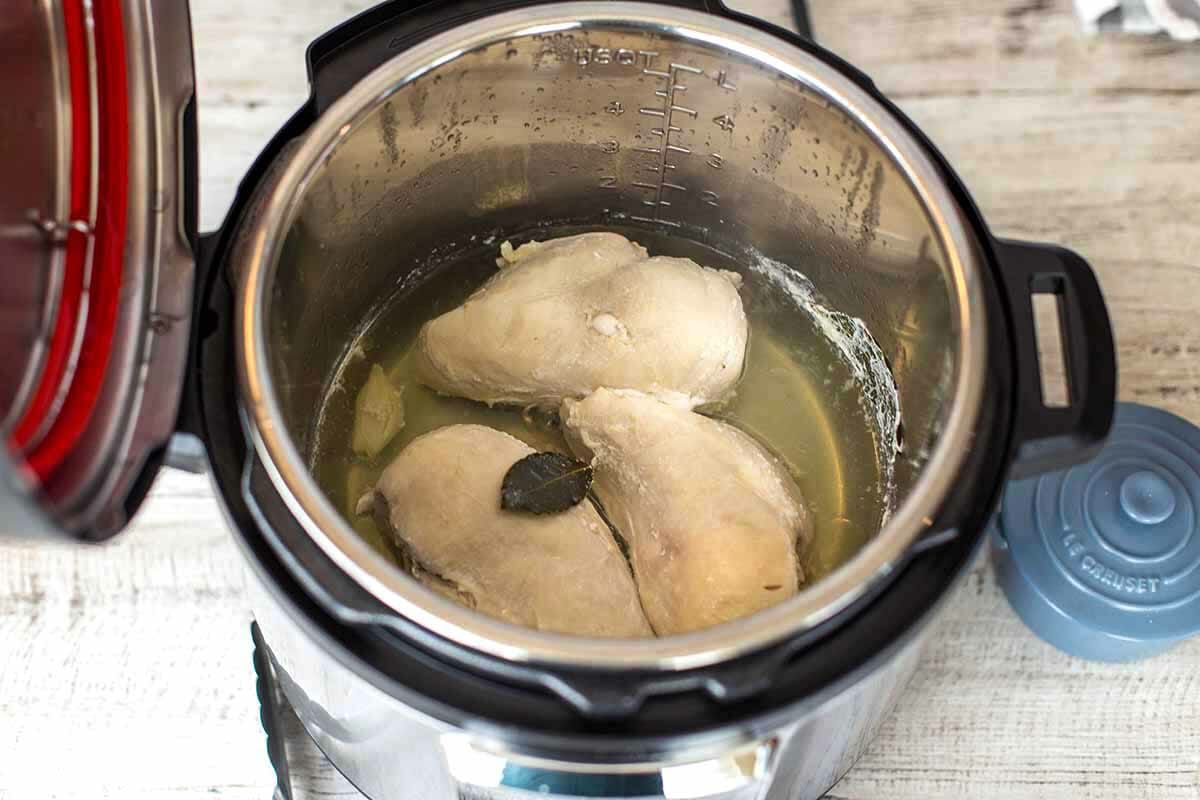Introduction
Have you ever wondered how to cook wheat berries to perfection? Look no further, as this article will guide you through the process of cooking wheat berries in an electric pressure cooker. Wheat berries are whole wheat kernels that are not processed or refined, making them a nutritious and versatile grain to incorporate into your diet. With their nutty flavor and chewy texture, they are a wonderful addition to salads, soups, and side dishes.
Using an electric pressure cooker to cook wheat berries is not only convenient but also time-saving. The high-pressure environment created by the electric pressure cooker allows the wheat berries to cook faster compared to traditional stovetop methods. This means you can enjoy a delicious and nutrient-packed meal in a fraction of the time.
In this article, we will explore the benefits of cooking wheat berries in an electric pressure cooker, learn how to properly prepare the wheat berries for cooking, determine the appropriate cooking time, and discover valuable tips to achieve the perfect result. We will also briefly discuss alternative cooking methods for wheat berries and offer guidance on serving and storing the cooked grains.
So, if you are ready to elevate your culinary skills and unlock the potential of wheat berries, let’s dive into the world of cooking these wholesome grains in an electric pressure cooker.
What are Wheat Berries?
Wheat berries are the individual kernels of whole wheat. They are the unprocessed, complete grains that have not been stripped of their bran and germ, unlike refined wheat flour. This means that wheat berries retain all the essential nutrients and fiber found in the wheat kernel, making them a highly nutritious choice.
These small, round grains have a firm and chewy texture with a nutty and slightly sweet flavor. They come in different varieties, including hard red wheat berries, soft white wheat berries, and durum wheat berries. Each variety has its own distinct characteristics and can be used in various culinary applications.
One of the main benefits of consuming wheat berries is their high nutritional content. They are rich in fiber, which aids in digestion, helps maintain a healthy weight, and reduces the risk of chronic diseases, such as heart disease and diabetes. Wheat berries are also a good source of complex carbohydrates, essential minerals like magnesium and phosphorus, and B vitamins.
Moreover, wheat berries are versatile and can be cooked in a variety of ways. They can be used as a base for salads, added to soups and stews, ground into whole wheat flour for baking, or even sprouted for added nutritional benefits. Their robust flavor and satisfying texture make them a fantastic addition to any dish and a popular choice among those seeking healthier alternatives to refined grains.
Now that we’ve gained an understanding of what wheat berries are, let’s explore the benefits of cooking them in an electric pressure cooker.
Benefits of Cooking Wheat Berries in an Electric Pressure Cooker
When it comes to cooking wheat berries, using an electric pressure cooker offers several advantages. Let’s explore the benefits of this cooking method:
- Time efficiency: One of the significant advantages of an electric pressure cooker is its ability to cook wheat berries quickly. The high pressure and temperature in the cooker expedite the cooking process, reducing the cooking time by up to half compared to traditional stovetop methods. This means you can enjoy a nutritious meal with tender wheat berries in no time.
- Energy efficiency: Electric pressure cookers have an airtight seal and harness steam to cook the food. This results in energy efficiency as the heat is utilized efficiently, reducing cooking time and ultimately lowering energy consumption.
- Retains nutrients: The high-pressure environment of an electric pressure cooker helps retain the nutrients in the wheat berries. Unlike boiling, where nutrients can be lost in the cooking water, the sealed environment of the pressure cooker preserves the vitamins, minerals, and antioxidants present in the wheat berries.
- Improved texture: Cooking wheat berries in an electric pressure cooker helps achieve a desirable texture. The high pressure and steam penetrate the grains, allowing them to become tender while maintaining their shape and chewiness. This results in perfectly cooked wheat berries with a satisfying bite and texture.
- Convenience: Electric pressure cookers are known for their convenience. Once you set the cooking time and pressure, you can walk away and let the cooker do its job. This frees up your time and allows you to focus on other tasks while your wheat berries cook to perfection.
- Versatility: Electric pressure cookers offer a range of settings and cooking options, allowing you to experiment with different recipes and techniques. Whether you want to cook plain wheat berries, infuse them with flavors by adding herbs or spices, or combine them with other ingredients in a one-pot meal, the electric pressure cooker can handle it all.
These benefits make cooking wheat berries in an electric pressure cooker an attractive option for those looking for a quick, nutritious, and hassle-free cooking method. As we move forward, let’s learn how to prepare the wheat berries before cooking them in the pressure cooker.
Preparing Wheat Berries for Cooking
Before cooking wheat berries in an electric pressure cooker, it is essential to properly prepare them to ensure optimal results. Follow these steps to prepare your wheat berries:
- Rinse: Start by rinsing the wheat berries under cold running water to remove any dirt or debris. Use a fine-mesh sieve or colander for this step.
- Soak (optional): Soaking the wheat berries is optional but can help reduce the cooking time and improve their texture. To soak, place the rinsed wheat berries in a bowl and cover them with enough water. Allow them to soak for at least 4 hours or overnight. Drain the soaked wheat berries before cooking.
- Sort: While wheat berries are generally clean, it’s a good practice to sort through them and remove any shriveled or discolored grains or any foreign objects that may have been missed during packaging.
- Flavoring (optional): If desired, you can add flavorings to the wheat berries before cooking. This can include adding herbs, spices, or a dash of salt to enhance the taste. The flavorings will infuse into the grains during the cooking process.
- Measure: Determine the amount of wheat berries you want to cook based on your recipe or desired serving size. Measure accordingly and adjust the amount of liquid and cooking time accordingly.
- Pat dry: Once you’ve finished preparing the wheat berries, pat them dry with a clean kitchen towel or paper towel to remove any excess moisture.
By following these simple steps, you can ensure that your wheat berries are clean, hydrated (if soaked), and ready to be cooked to perfection in your electric pressure cooker. Speaking of cooking, let’s move on to the next section, where we will explore the optimal cooking time for wheat berries in an electric pressure cooker and provide useful tips for achieving the best results.
Cooking Time for Wheat Berries in an Electric Pressure Cooker
The optimal cooking time for wheat berries in an electric pressure cooker can vary depending on the type and texture you desire. Generally, wheat berries require about 20-30 minutes of cooking time under high pressure. Here’s a basic guideline to help you determine the cooking time:
- Soft wheat berries: Soft wheat berries, such as the soft white variety, tend to cook faster. Cook them for around 20-25 minutes under high pressure.
- Hard wheat berries: Hard wheat berries, like hard red or durum, require a longer cooking time to achieve a tender texture. Cook them for approximately 25-30 minutes under high pressure.
- Soaked wheat berries: If you soaked the wheat berries before cooking, they will cook faster than non-soaked wheat berries. Reduce the cooking time by 5-10 minutes, depending on the level of soaking.
It’s important to note that these are general guidelines, and the cooking time may vary based on your specific electric pressure cooker and personal preference for texture. It’s always recommended to consult your pressure cooker’s manual for specific instructions regarding cooking grains.
Once the cooking time is complete, allow a natural release of pressure for about 10 minutes before using the quick-release valve to release any remaining pressure. This will help ensure that the wheat berries are fully cooked and tender.
Keep in mind that altitude can also affect the cooking time. If you are cooking at a high altitude, you may need to increase the cooking time slightly to compensate.
Now that you know the optimal cooking time for wheat berries in an electric pressure cooker, let’s move on to the next section, where we will share some useful tips to help you achieve the best results.
Tips for Cooking Wheat Berries in an Electric Pressure Cooker
To ensure successful results when cooking wheat berries in an electric pressure cooker, here are some valuable tips to keep in mind:
- Use the right amount of liquid: Wheat berries require an adequate amount of liquid to cook properly. Follow the recommended liquid-to-wheat ratio mentioned in your pressure cooker’s manual or your recipe. As a general guideline, use 2 1/2 cups of water or broth for every 1 cup of wheat berries.
- Add flavorings: While not necessary, adding flavorings, such as herbs, spices, or a dash of salt, can enhance the taste of the wheat berries. Add them directly to the cooking liquid or soak the wheat berries with the flavorings before cooking.
- Avoid overfilling: Do not fill the pressure cooker more than two-thirds full, as the grains will expand during cooking, and you need to leave space for the steam to build up.
- Soak for quicker cooking time: Soaking the wheat berries before cooking can help reduce the cooking time and result in a more tender texture. If you opt to soak, adjust the cooking time accordingly, reducing it by approximately 5-10 minutes.
- Experiment with cooking times: Depending on your personal preference for texture, you may want to adjust the cooking time slightly. If you prefer softer wheat berries, cook them for a few minutes longer. For a chewier texture, shorten the cooking time slightly.
- Preheat the pressure cooker: Preheating the pressure cooker before adding the wheat berries can help speed up the cooking process. Simply select the sauté function, add a small amount of oil or butter, and sauté the wheat berries for a minute or two before adding the liquid and pressure cooking.
- Use a natural or quick release: After the cooking time is complete, you can either release the pressure naturally or use the quick-release valve. Natural release involves allowing the pressure to go down on its own, which takes approximately 10 minutes. Quick release involves manually releasing the pressure using the valve. Choose the method that works best for your recipe and time constraints.
- Fluff before serving: Once the wheat berries are cooked and the pressure has been released, open the lid carefully and fluff the grains with a fork. This will help separate any clumps and distribute the flavors evenly.
By following these tips, you will be well on your way to successfully cooking wheat berries in your electric pressure cooker. Now, let’s explore alternative cooking methods for wheat berries for those who do not have access to an electric pressure cooker.
Alternative Cooking Methods for Wheat Berries
If you don’t have an electric pressure cooker or prefer to explore alternative cooking methods for wheat berries, here are a few options to consider:
- Stovetop method: The stovetop method is the most traditional way of cooking wheat berries. In a saucepan, combine the rinsed wheat berries with water or broth in a ratio of 1:3. Bring the mixture to a boil, then reduce the heat to low, cover the saucepan, and simmer for about 45-60 minutes or until the wheat berries are tender but still have a chewy texture. Drain any excess liquid before serving.
- Slow cooker method: Cooking wheat berries in a slow cooker is a convenient option if you prefer to set it and forget it. In the slow cooker, combine the rinsed wheat berries with water or broth in a ratio of 1:3. Cook on low heat for 4-6 hours or on high heat for 2-3 hours, or until the wheat berries are tender. The exact cooking time may vary depending on your slow cooker model.
- Oven method: The oven method is another alternative for cooking wheat berries. Preheat your oven to 350°F (175°C). In a baking dish, combine the rinsed wheat berries with water or broth in a ratio of 1:3. Cover the baking dish tightly with foil or a lid and bake for approximately 1 to 1 1/2 hours, or until the wheat berries are tender. Keep an eye on them to prevent them from drying out, and add more liquid if necessary.
- Microwave method: If you’re short on time, you can even cook wheat berries in the microwave. In a microwave-safe bowl, combine the rinsed wheat berries with water or broth in a ratio of 1:3. Cover the bowl with a microwave-safe lid or plastic wrap, leaving a small vent. Microwave on high power for 15 minutes, then stir the grains and continue microwaving in 5-minute intervals until the wheat berries reach your desired tenderness.
These alternative cooking methods provide flexibility and can be adapted to suit your preferences and available kitchen appliances. Regardless of the method you choose, be sure to adjust the cooking time and liquid amount as needed to achieve the desired texture and to fully cook the wheat berries.
Now that you know various ways to cook wheat berries, let’s move on to the next section, where we will discuss serving suggestions and storing cooked wheat berries.
Serving and Storing Cooked Wheat Berries
Once your wheat berries are perfectly cooked, it’s time to reap the rewards and enjoy them in a variety of delicious dishes. Here are some ideas for serving cooked wheat berries:
- Salads: Add cooked wheat berries to salads for an extra burst of texture and nutrition. They pair well with fresh vegetables, leafy greens, and a tangy dressing. Try combining them with cherry tomatoes, cucumber, feta cheese, and a lemon vinaigrette.
- Soups and stews: Throw cooked wheat berries into hearty soups or stews to add a satisfying and wholesome touch. They can elevate the flavors and create a more filling dish. Consider adding them to vegetable soup, chili, or minestrone.
- Side dish: Treat cooked wheat berries as a nutritious side dish for roasted or grilled meats, such as chicken or beef. Simply season them with herbs and spices, toss them with some roasted vegetables, and serve alongside your main course.
- Buddha bowls: Create a nourishing Buddha bowl by combining cooked wheat berries with a variety of colorful vegetables, protein, and a flavorful dressing. The chewiness of the wheat berries adds a wonderful contrast to the other ingredients.
- Breakfast porridge: Transform cooked wheat berries into a warm and comforting breakfast porridge. Mix them with milk or non-dairy alternatives, sweeten with maple syrup or honey, and top with your favorite fruits, nuts, and spices like cinnamon or nutmeg.
When it comes to storing cooked wheat berries, follow these guidelines to keep them fresh:
- Refrigeration: Allow the cooked wheat berries to cool completely before transferring them to an airtight container. Store them in the refrigerator for up to 5 days.
- Freezing: If you have cooked an excess amount of wheat berries, freezing is a great option. Let them cool, place in a freezer-safe container or bag, and freeze for up to 3 months. Thaw them in the refrigerator overnight before using.
- Meal prepping: If you prefer to plan ahead, cooked wheat berries can be part of your meal prepping routine. Prepare a batch, store it in individual meal containers, and refrigerate or freeze them for convenient use in future meals.
Remember to always label and date your stored wheat berries for easy identification.
Now that you know how to serve and store cooked wheat berries, you can unleash your culinary creativity and enjoy these nutritious grains in various dishes. Let’s wrap up this article with a quick recap of what we’ve covered.
Conclusion
Now that you have learned how to cook wheat berries in an electric pressure cooker, you can confidently add this nutritious and versatile grain to your culinary repertoire. Whether you choose to use an electric pressure cooker, stovetop, slow cooker, oven, or microwave, you have a range of methods to suit your cooking preferences and available kitchen appliances.
Wheat berries offer a multitude of benefits, including their high fiber content, essential nutrients, and satisfying chewy texture. Cooking them in an electric pressure cooker not only saves time but also helps retain their nutritional value and achieve the desired tender texture.
Remember to properly prepare and measure your wheat berries, adjust the cooking time to your preference, and experiment with flavorings to enhance their taste. Additionally, consider the alternative cooking methods, such as stovetop, slow cooker, oven, or microwave, if an electric pressure cooker is not available to you.
Once your wheat berries are cooked to perfection, the possibilities are endless. From adding them to salads, soups, and stews to using them as a side dish or breakfast porridge, you can incorporate them into various meals for added nutrition and textural enjoyment.
When it comes to storage, refrigerate or freeze the cooked wheat berries for future use, ensuring you label and date them for easy reference.
So, get ready to elevate your cooking game and savor the goodness of wheat berries. With these tips and techniques, you can now confidently embark on your culinary journey with this wholesome grain. Enjoy the nutty flavor, chewy texture, and abundance of nutritional benefits that wheat berries have to offer!







